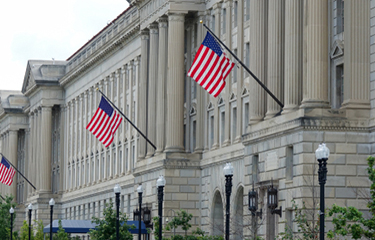US Department of Commerce releases export strategy to address seafood trade imbalance

International trade imbalances are hampering America's seafood industry, but the U.S. government is working to address those issues and promote exports, according to a new export strategy from the U.S. Department of Commerce.
Released in late June, the strategy calls for increased coordination across government agencies, using artificial intelligence to process export data, and greater outreach to the seafood industry.
“Difficulty accessing foreign markets undermines the potential growth and competitiveness of the U.S. seafood industry,” the document said. “Fishing vessel owners and operators, processors, exporters, and other stakeholders have expressed concerns that foreign competitors have better access to the U.S. market than the U.S. seafood industry has overseas, undercutting market opportunities both domestically and internationally.”
According to NOAA Fisheries, the United States had a seafood trade deficit of USD 17 billion (EUR 15.7 billion) in 2019.
The U.S. government has taken initiative to address the imbalance and improve U.S. seafood’s position in the global market. When NOAA Fisheries reorganized its international office in 2022, it established a new trade and commerce division to improve its analytic and policy capacity and prioritize seafood trade and competitiveness. The international office has consolidated all four of the agencies’ trade-monitoring programs under its purview, and it plans to further promote U.S. seafood exports and ensure fair market access, according to the document.
Additionally, a national plan for U.S. seafood under development at NOAA Fisheries will include “a robust export strategy.”
Beyond NOAA Fisheries’ individual efforts, the Department of Commerce said there will be increased coordination on seafood trade across several government agencies, including the U.S. Department of Agriculture, the Food and Drug Administration, and the Office of the U.S. Trade Representative. The department plans on establishing a new seafood working group to help foster interagency cooperation.
“NOAA Fisheries will enhance efforts to provide subject matter expertise to other agencies that have specific trade negotiation and enforcement authorities to help devise strategies and action plans focused on trade barriers identified by the seafood industry,” the document said.
NOAA Fisheries is also developing tools for gathering, analyzing, and disseminating key seafood data, and the agency will lead the charge to synthesize seafood-related trade data and market intelligence across multiple agencies, creating a central repository for policymakers to access it. Those tools, which are currently in a demonstration project stage, will use artificial intelligence and cloud technology to “verify legitimate trade, deter trade in IUU fish and fish products, and monitor imports to detect high-risk shipments,” according to the document.
NOAA Fisheries has also developed a health certificate for exports that the U.S. will use in negotiations with key export markets. The agency said the new standard reduces the certification burden on industry while incorporating all internationally agreed-upon health and safety concerns. NOAA Fisheries will begin negotiations with priority countries, which were not listed in the report, to prove the concept before expanding it elsewhere.
Under the strategy, NOAA Fisheries will design outreach strategies to better engage with industry both domestically and overseas.
“Longer-term, more established mechanisms to consult with the U.S seafood industry could unlock other opportunities to improve marketing in support of broader trade and commerce objectives,” the strategy states.
The federal government will continue to promote U.S. seafood overseas, and the strategy directs agencies to explore export promotion opportunities with minority business enterprises, such as tribes.
Photo courtesy of Shutterstock / Diegomezr






Share